Your cart is empty
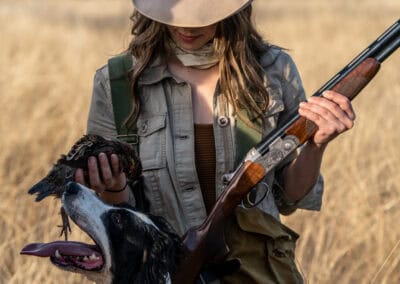
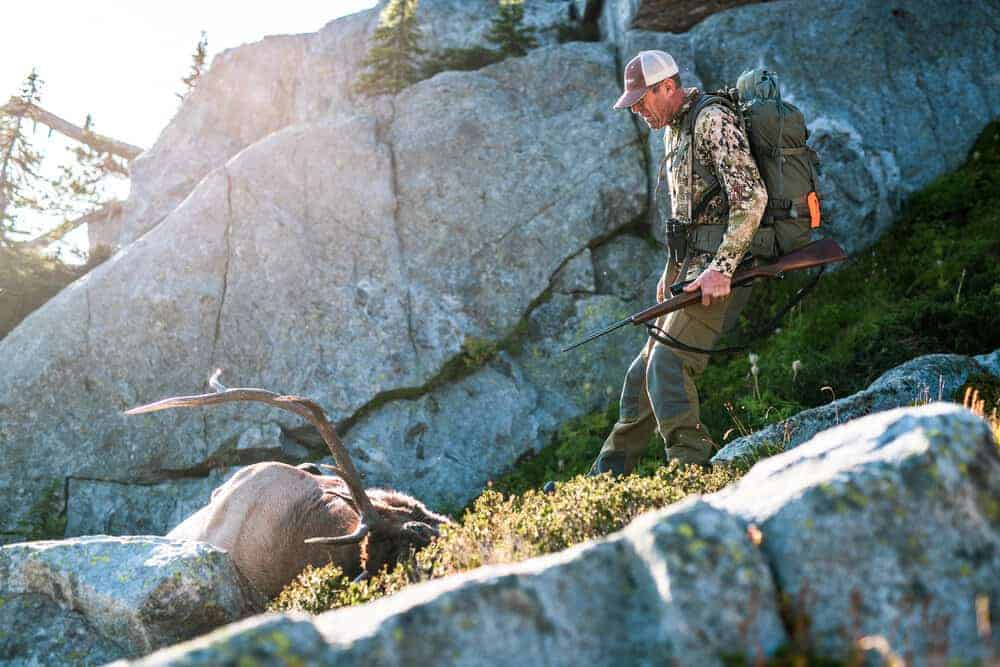
Morning sun shone on tawny hide as the bull elk weaved through granite and grouse huckleberry. Black hooves pounded on hollow high country soil as the bull toiled up the ridge, stopping to scream a challenge and then starting up the ridge again. He disappeared behind a copse of subalpine fir; I knelt and bugled back, bugle tube reverberating in shaking hand. Before the echo of my bugle faded he answered, and I could hear the clatter of rock and the twisting of brush as he thundered into a small drainage between us — he was coming.
“Dad, get ready, he’s going to be here in no time,” I hissed.
Dad glanced down at the rifle in his hands, as if realizing for the first time that things were happening fast and he didn’t yet have a round in the chamber. The Mauser action on the decades-old Ruger .270 clicked open and slid back, and the bull screamed again. He was close now, 150 yards and closing.
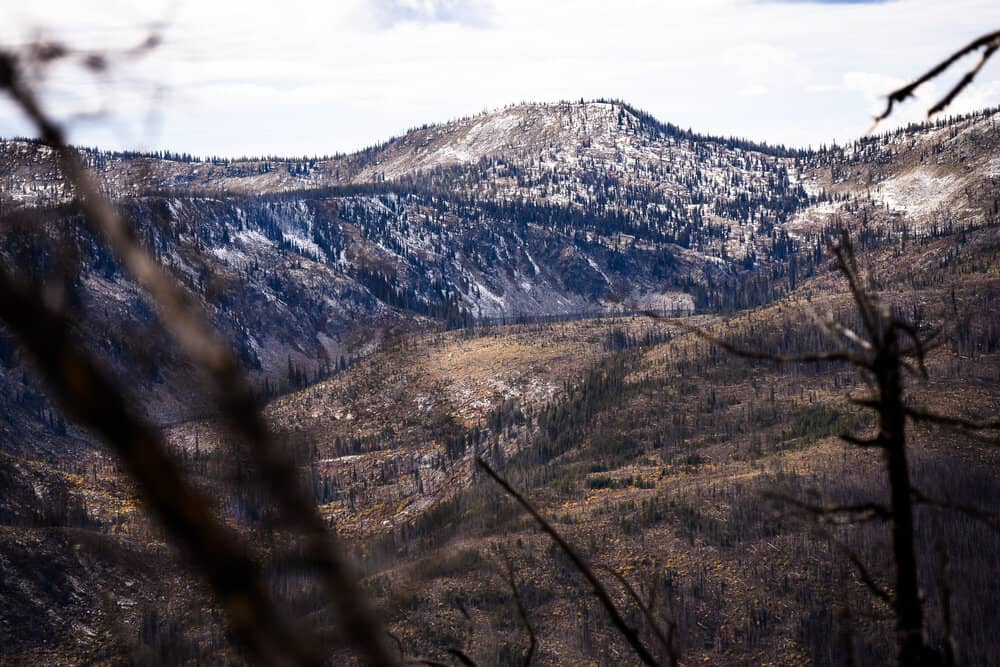
I scanned the sparse timber below us. Tan hide flashed through an opening and the bull appeared like an apparition, looking uphill. Dad crouched a few yards to my right and from his angle there was still no shot. My rifle sat loaded on my lap. I had a tag, too, and I pondered shooting the bull; I could kill him from here quite easily. Even shooting offhand, the range was less than a football field. If he winded us he would be gone, probably for good. And elk sure as hell aren’t easy to come by in this vast Idaho wilderness. I knew Dad wouldn’t mind; or if he did, he’d never let on.
A younger me would have shot the bull, almost certainly. For a younger me it was all bloodlust; success or failure was delineated simply by bloody hands and notched tags or lack thereof. But no, not this time, not here, this would be Dad’s bull or no one’s.
As if sensing my decision the bull turned, stepping fast up the mountain. Now I knew how things would play out with a small measure of certainty. There comes a point in some situations where the conclusion becomes foregone, where things happen quickly and in slow-motion, all at once. The hunter feels more than he thinks, and afterwards there can be no recollection of conscious thought demanding action. A safety clicks off, a sudden step this way or that to clear a shooting lane; the hunter crouches or stops,moves swiftly or not at all. Often it’s imperceptible actions determine outcomes.
My eyes shifted back to Dad, “He’s going to be damn close, pops. Get ready.”
The bull disappeared below us, and I could hear breath and hoofbeats and nothing else. Antlers broke the granite ridge just ahead, then ears, then the bull was there in its entirety.
At 55 yards he stood statuesque, ears and eyes swiveling, searching for the bull who’d challenged him. His breath rose into the morning light like steam from a meandering river on a November dawn.
Dad crouched, unmoving. His eyes flitted back and forth below us and in a rush I realized he didn’t see the bull.
“Shit. Dad he’s right there. Further right … no closer. Really close! Fifty yards.”
Dads eyes searched with equal intensity, and when his grip stiffened on the weathered wood stock I knew he saw him. The barrel shifted up and right as Dad melded cheek to weathered wood like he had so many times before. The bull stood facing us, unmoving and quartered sharply.
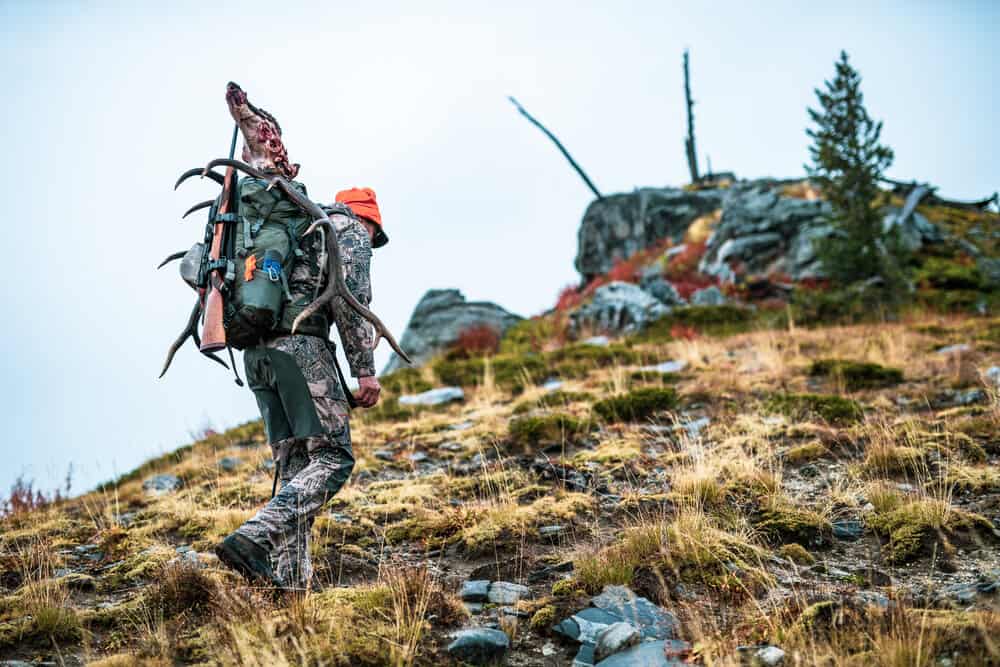
The crack of the rifle seemed surreal and alien in the stillness of the morning, and for a moment nothing moved. The bull stood rooted in place and then slowly craned his neck as if to look behind him at something. He didn’t run, and nothing moved. As if the universe had acknowledged that someone or something had made a terrible mistake in disrupting the quiet, and that it could be glossed over so long as it didn’t happen again.
I never heard Dad work the bolt, but now the rifle roared again and this time the bull stumbled but he didn’t fall. Then a third round crashed through his ribcage and he fell;backward and away from us out of sight over the ridge.
The acrid smell of gunpowder filled my nostrils and I stood looking and listening for any movement from the ridge – nothing. Dad cleared the bolt and pocketed the empty and pawing through the bunch grass for the others. He looked at me, his eyes smiling beneath his late 70’s eyeglasses.
Dad didn’t like the killing, not a bit, I knew that. But he loved that moment. He loved the fact that it was him and I in the unbroken wilderness; blue sky and pileated woodpeckers and black bear and bugling elk. Colossal burn scars, old-growth fir thickets and granite boulder fields. He loved the fact that we were there together.
Two hours later we shouldered backpacks heavy with hindquarter and backstrap, tenderloin and gear and soldiered up and out of the midday canyon toward camp. At 65 years old, Dad did more than his fair share, and by dark we’d managed to pack the entire bull to the trailhead. The weather was warm, too warm to keep meat overnight, so Dad loaded the bull and turned the truck toward town and coolers full of ice. I turned up the trail to camp following the beam of my headlight.
That night, dad slept in the pickup parked a front a local butcher shop, and I lay alone in our tent beneath a myriad stars and couldn’t keep from smiling. I was damn proud, and I wondered if perhaps I felt the same way he’d felt years earlier when I’d used that same .270 of his to kill my first elk.
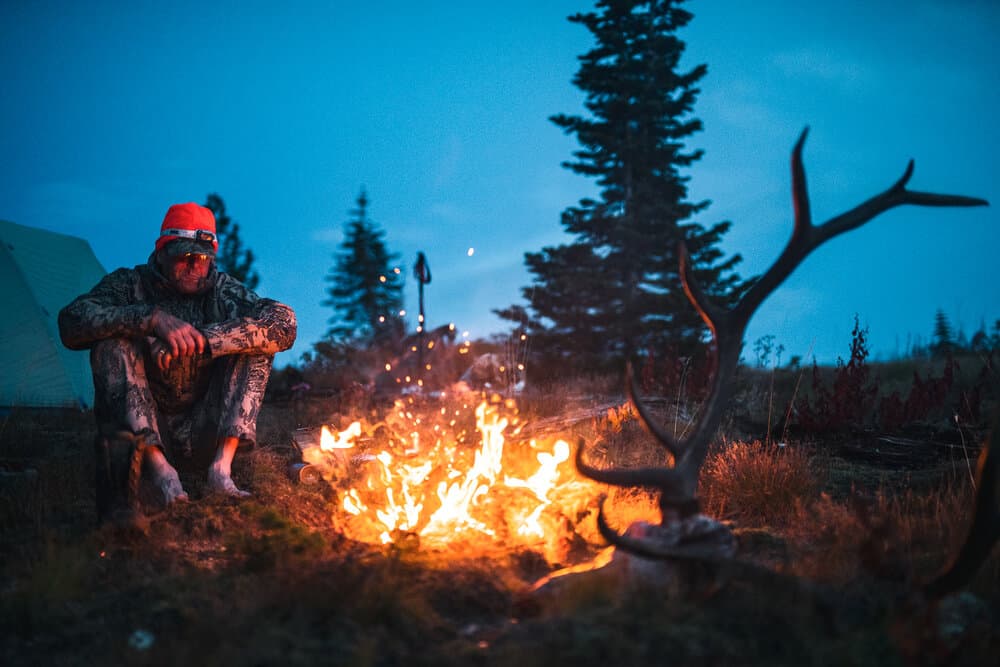
I spend an inordinate amount of time looking at maps and Google Earth on my computer before I ever set foot in a hunting area. On this hunt, I’d never even set foot in the place we hunted but by the time we got there I felt like I knew what to expect simply because I’d spent so much time looking at maps.
Here’s a few quick tips:
1. Invest in an online mapping service. I use OnX Hunt, and I have for some time now. I use Google Earth, too, but as OnX continues to improve their satellite imagery and database, I find myself spending more and more time on that platform than any other. Easy toggling between topo (topography) and satellite mode can help when planning routes and determining bedding and feeding areas. Utilizing layers like the Motor Vehicle Use Map and Wildfire History can be a huge help, too. There’s nothing like hiking for hours only to stumble upon an open road, where you thought was the middle-of-nowhere.
2. It’s ALWAYS further than it looks on the map. Wild and steep country has the devilish tendency to always appear more manageable from the comfort of your kitchen table. I’ve made many a hunt plan weeks in advance only to arrive at the chosen spot and realize that in fact, the next ridge is a hell of a lot further than I’d anticipated. Pay close attention to the topography lines on a map when you’re planning a hunt, note elevations and do your best to estimate distances using the tools provided on the mapping service. Be realistic with yourself.
3. Have a backup plan (or three). More often than not, I find myself resorting to Plan B, C or D when I finally get boots on the ground in new country. Surprisingly, things aren’t always as they appear from the internet – it can be tough to tell exactly how thick the vegetation is in some areas, or how rocky the ground is in the high country. Your number one spot may be overrun with hunters or you’re just not seeing as many critters as you’d anticipated. It always pays to have a couple of solid backup plans just in case.
As a younger man I hunted to kill, as I think many young men do. I hunted to be successful, and to me that meant going further, climbing steeper, staying longer and ultimately killing an animal. I thought that anyone who said they hunted strictly for meat was a liar, and in fact, I still do. There’s more to it than that.
The ultimate goal was always to be successful – to kill an animal. But watching my Dad the last few years has opened my eyes to the idea that maybe success isn’t defined so easily. That maybe I’ve been missing a serious piece of the puzzle, and that maybe success is different for everyone depending upon their progression as a hunter.
For Dad, hunting has never been about the killing.
This fall, there were rumors of a giant bull occasionally crossing our small ranching property in eastern Oregon, and Dad had drawn a landowner permit for one bull elk.
Two months after our Idaho elk hunt, Dad called me and excitedly, I answered the phone. “How’d it go? Did you get him?” I asked.
“Nope, but I could have! And a nice one at that, a big six point.” he chuckled. “Way bigger than our bull from Idaho.”
“What happened? Too far? No shot? What happened?” I stammered.
“Oh no. He was plenty close. And I even had the safety off once. I just didn’t shoot,” he paused a moment, thinking. “I guess I just didn’t feel like it. Maybe if you had been there I’d have shot him, I don’t know … what a nice bull.”
I laughed and nodded; a little speechless but not at all surprised. More than a decade ago, I watched as my Dad passed a goliath whitetail buck that stood broadside at 40 yards for several minutes. That time, he’d lowered the rifle and whispered, “Ah, I’m not going to shoot him.”
And at 10 years old I was angry with his decision, I mean, weren’t we out there to kill a deer? I couldn’t understand why he’d passed the buck.
Now, I get it. These days I’m following my old man’s lead – enjoying the process, appreciating the little things and above all, appreciating the people you’re with. Dad is 65 now, and he’s still in damn good physical shape, but I know our time in the woods together is finite. So together we’re redefining success in the wilderness.
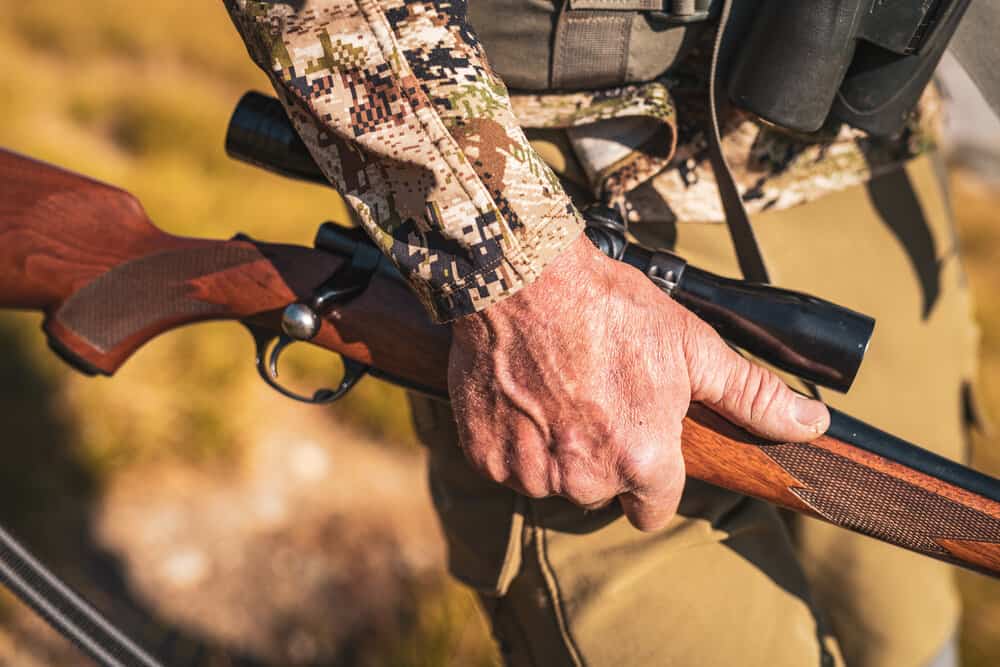
Having solid boots is critical to covering the nasty terrain that elk call home. I used Crispi Guide GTX boots for this hunt. They’ve been an awesome boot so far, and have held together better than other similar boots I’ve tried.
Backpack hunting requires a bag that can handle heavy loads over long distances, but is also versatile enough to use for single day excursions once you’ve dropped your camp. I use a Stone Glacier Sky 5900. It’s lightweight and tough, spacious enough to pack a weeks worth of camp but versatile enough to run as a day pack.
Vortex Razor HD 12×50 binoculars have been my go to for several years now. They’re an awesome bino at a price point significantly lower than some of their European counterparts. I find that the 12’s on a tripod are unreal for spotting elk at long distances and mule deer in the patchy burns and grey timber of the West.
On this hunt we used a Stone Glacier Skyscraper 2P backpacking tent. It’s a lightweight option if you’re going deep, and holds it’s own in snow and high wind.
Late fall in the high country can bring about a range of weather conditions. On this hunt, we saw snow, rain and blue sky days. Lightweight packable rain gear is critical. I wore the Cloudburst Jacket and Pant from Sitka Gear. It’s their lightest weight, most packable rain gear and great for backpack hunting.
Sitka Gear has a wide range of insulation pieces for the backcountry hunter, but one of my all time favorites is the Kelvin Lite Hoody. It’s a lightweight version of their burlier puffy jackets and paired with the Sitka Gear Heavyweight Hoody, you’ll stay plenty warm in most fall conditions.
For mid-late season excisions, the Timberline Pant has long been my go-to option. It’s a heavier pant, allowing you to forgo long underwear if it won’t be seriously cold, and waterproof knees and rear are great for glassing and long stalks.
In an era obsessed with magnum calibers, turrets and long range optics, Dad has stayed committed to a classic. On this hunt (and damn near all of the others) he shot a Ruger M77 chambered in .270. His rifle is an older version purchased in the late 1970’s, but that hasn’t affected its accuracy or dependability on elk and deer.
Related Stories


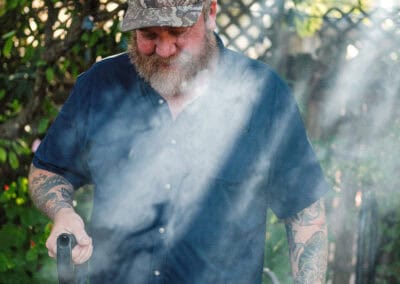
Latest Stories


